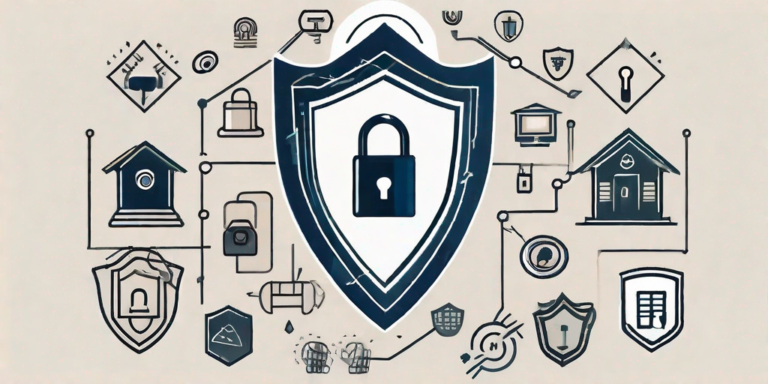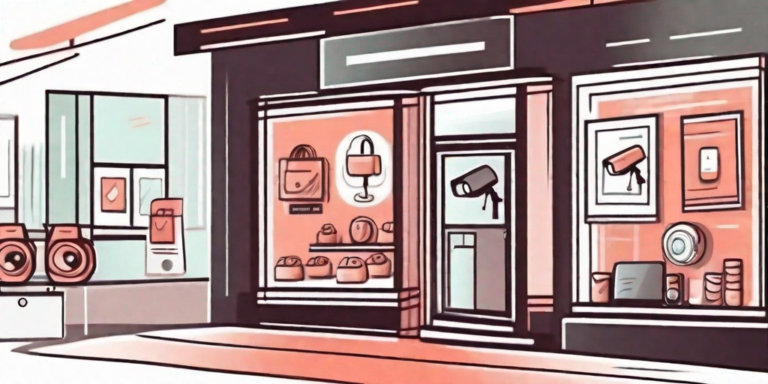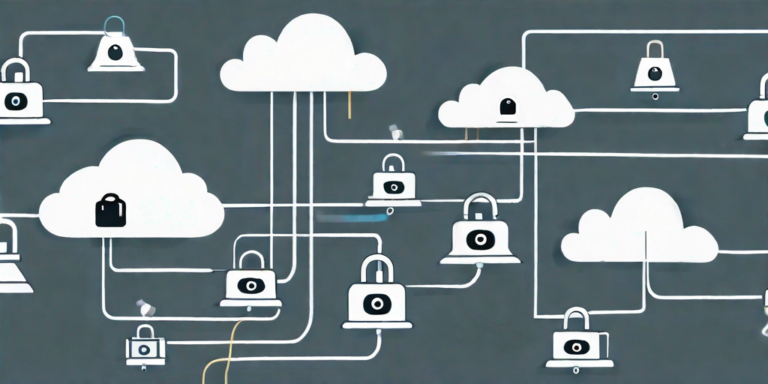Video surveillance systems play a crucial role in ensuring the security and safety of both residential and commercial properties. These systems provide valuable evidence in case of incidents, deter criminal activities, and help in identifying and resolving security threats. However, like any other technology, video surveillance systems can experience issues that may result in video loss, compromising the effectiveness of the system. To ensure the continuous operation of your video surveillance system, it is essential to take certain key steps. In this article, we will discuss the importance of synchronizing your video security system’s components, efficient identification and resolution of security threats, innovative approaches to stop security problems, navigating the legalities of video surveillance evidence, and solving video quality and interruption problems.
Synchronizing Your Video Security System’s Components
One of the primary causes of video loss in surveillance systems is the lack of proper synchronization between various system components. To avoid this issue, it is crucial to ensure that all components, including cameras, recorders, and monitors, are synchronized effectively.
When it comes to synchronizing your video security system’s components, following the manufacturer’s guidelines for installation and configuration is essential. These guidelines provide step-by-step instructions on how to properly connect and synchronize each component, ensuring seamless operation.
For example, when installing cameras, it is important to align them correctly to capture the desired field of view. Proper alignment ensures that the cameras are synchronized with the rest of the system, allowing for accurate video recording and monitoring.
In addition to following the manufacturer’s guidelines, seeking professional assistance can be beneficial, especially for larger and more complex surveillance systems. Professional installers have the expertise and experience to ensure that all components are synchronized correctly, minimizing the risk of video loss or other synchronization issues.
Another crucial aspect of maintaining synchronization is regularly updating the firmware and software of your surveillance system components. Manufacturers often release updates that address compatibility issues and improve system performance. By keeping your components up to date, you can ensure that they work harmoniously together, reducing the chances of synchronization problems.
Furthermore, staying vigilant and keeping track of system alerts and notifications can help in identifying any synchronization issues. Many surveillance systems provide real-time alerts for various events, such as camera disconnects or communication errors. By promptly addressing these alerts, you can prevent potential video loss and maintain the synchronization of your system.
In conclusion, synchronizing your video security system’s components is crucial for ensuring reliable and effective surveillance. By following the manufacturer’s guidelines, seeking professional assistance when needed, updating firmware and software, and staying vigilant with system alerts, you can minimize the risk of video loss and enjoy seamless operation of your surveillance system.
Efficient Identification and Resolution of Security Threats
Video surveillance systems are deployed to detect and prevent security threats, ranging from petty theft to more serious crimes. To optimize the effectiveness of your system, it is essential to efficiently identify and resolve security threats in a timely manner. Regular monitoring of your surveillance system can help in early detection of suspicious activities or potential threats.
One important aspect of efficiently identifying and resolving security threats is the use of advanced analytics. Modern video surveillance systems are equipped with intelligent algorithms that can analyze video footage in real-time. These algorithms can detect abnormal behavior, such as loitering, trespassing, or sudden movements, and alert security personnel to potential threats.
Furthermore, integrating your video surveillance system with other security technologies can enhance its capabilities. For example, by integrating access control systems, you can track the movement of individuals within your premises and correlate it with video footage. This can help in identifying unauthorized access attempts or suspicious behavior.
Another factor that contributes to efficient threat resolution is the availability of high-quality video footage. Investing in high-resolution cameras and ensuring proper lighting conditions can greatly improve the clarity and detail of captured images. This, in turn, makes it easier for security personnel to identify individuals, objects, or actions accurately.
Establishing a clear protocol for handling security incidents and communicating the findings to the relevant authorities is crucial for a quick response and resolution. This protocol should include steps for documenting incidents, preserving evidence, and reporting to law enforcement if necessary. By following a standardized procedure, security personnel can ensure that no crucial information is overlooked, and the necessary actions are taken promptly.
Proper training of security personnel is also vital for efficient identification and resolution of security threats. They should be trained on how to effectively access and analyze video surveillance footage, interpret the findings, and take appropriate action. Regular training sessions and refresher courses can keep security personnel up-to-date with the latest techniques and technologies in the field of video surveillance.
Moreover, it is essential to establish a collaborative approach to security within your organization. Encouraging employees to report any suspicious activities or potential threats can significantly enhance the effectiveness of your surveillance system. By fostering a culture of vigilance and awareness, you create an additional layer of security that complements the capabilities of your video surveillance system.
In conclusion, efficiently identifying and resolving security threats requires a combination of advanced analytics, integration with other security technologies, high-quality video footage, clear protocols, proper training, and a collaborative approach. By implementing these measures, you can enhance the effectiveness of your video surveillance system and ensure the safety and security of your premises.
Innovative Approaches to Stop Security Problems
In today’s ever-evolving technological landscape, innovative approaches are continually emerging to enhance the effectiveness of video surveillance systems. One such approach is the use of intelligent video analytics. By leveraging artificial intelligence and advanced algorithms, these analytics can automatically detect and alert security personnel of specific events or abnormal behavior, such as unauthorized access or loitering.
Integrating video surveillance systems with access control and alarm systems can provide a comprehensive security solution. This integration allows for automated actions, such as locking doors or sounding alarms when specific events occur, further deterring potential security problems.
Another innovative approach to stop security problems is the implementation of facial recognition technology. This technology uses biometric data to identify individuals and can be integrated into video surveillance systems. By comparing captured faces against a database of known individuals, security personnel can quickly identify potential threats or unauthorized individuals.
Furthermore, the use of thermal imaging cameras is gaining popularity in security systems. These cameras can detect heat signatures, allowing security personnel to identify potential intruders or suspicious activity even in low-light or obscured environments. By combining thermal imaging technology with intelligent video analytics, security systems can provide a more comprehensive and accurate detection capability.
Additionally, the rise of the Internet of Things (IoT) has opened up new possibilities for enhancing security systems. By connecting various devices and sensors, such as motion detectors, door sensors, and environmental sensors, security systems can gather real-time data and respond proactively to potential security threats. For example, if a motion detector detects movement in a restricted area, an alert can be sent to security personnel, who can then access the video feed from the corresponding surveillance camera to assess the situation.
Moreover, cloud-based storage and analysis of surveillance footage have revolutionized the way security systems operate. With cloud storage, surveillance footage can be securely stored off-site, reducing the risk of data loss or tampering. Cloud-based analysis also enables security personnel to access and analyze footage remotely, providing flexibility and efficiency in monitoring and responding to security incidents.
In conclusion, innovative approaches to stop security problems continue to evolve and enhance the effectiveness of video surveillance systems. From intelligent video analytics and facial recognition technology to thermal imaging cameras and IoT integration, these advancements offer a more comprehensive and proactive approach to security. With the continuous development of technology, the future of security systems holds even greater potential for deterring and preventing security problems.
Navigating the Legalities of Video Surveillance Evidence
While video surveillance systems are a valuable tool for capturing evidence, it is crucial to navigate the legalities surrounding their use. Understanding the privacy laws and regulations governing your jurisdiction is essential to ensure compliance and avoid potential legal ramifications.
When using video surveillance footage as evidence, it is important to maintain the chain of custody and handle the footage in a manner that preserves its integrity. Consultation with legal professionals can provide guidance on the proper handling of video surveillance evidence and ensure its admissibility in a court of law, if required.
Solving Video Quality and Interruption Problems in Security Systems
Video quality and interruption problems can significantly impact the effectiveness of a video surveillance system. Blurry or pixelated footage may make it difficult to identify crucial details or individuals. Additionally, frequent interruptions in the video feed can lead to missed events or gaps in the footage.
To address these issues, regular maintenance and inspection of cameras and cables are essential. Cleaning camera lenses, adjusting focus and angles, and replacing faulty cables can improve video quality and reduce interruptions. Ensuring an adequate power supply and stable network connectivity is also vital to prevent video loss or degradation.
Regular system backups and remote monitoring can help in quickly identifying and rectifying any video quality or interruption problems. It is also advisable to have a contingency plan in place, such as backup cameras or redundant recording systems, to minimize the impact of any unforeseen issues.
In conclusion, protecting your video surveillance system from video loss requires proactive measures. Synchronizing system components, efficiently identifying and resolving security threats, adopting innovative approaches, understanding the legalities of using video surveillance evidence, and addressing video quality and interruption problems are key steps to ensure the continuous operation and effectiveness of your system. By implementing these steps and regularly maintaining your video surveillance system, you can protect your property and enhance the security measures in place.






